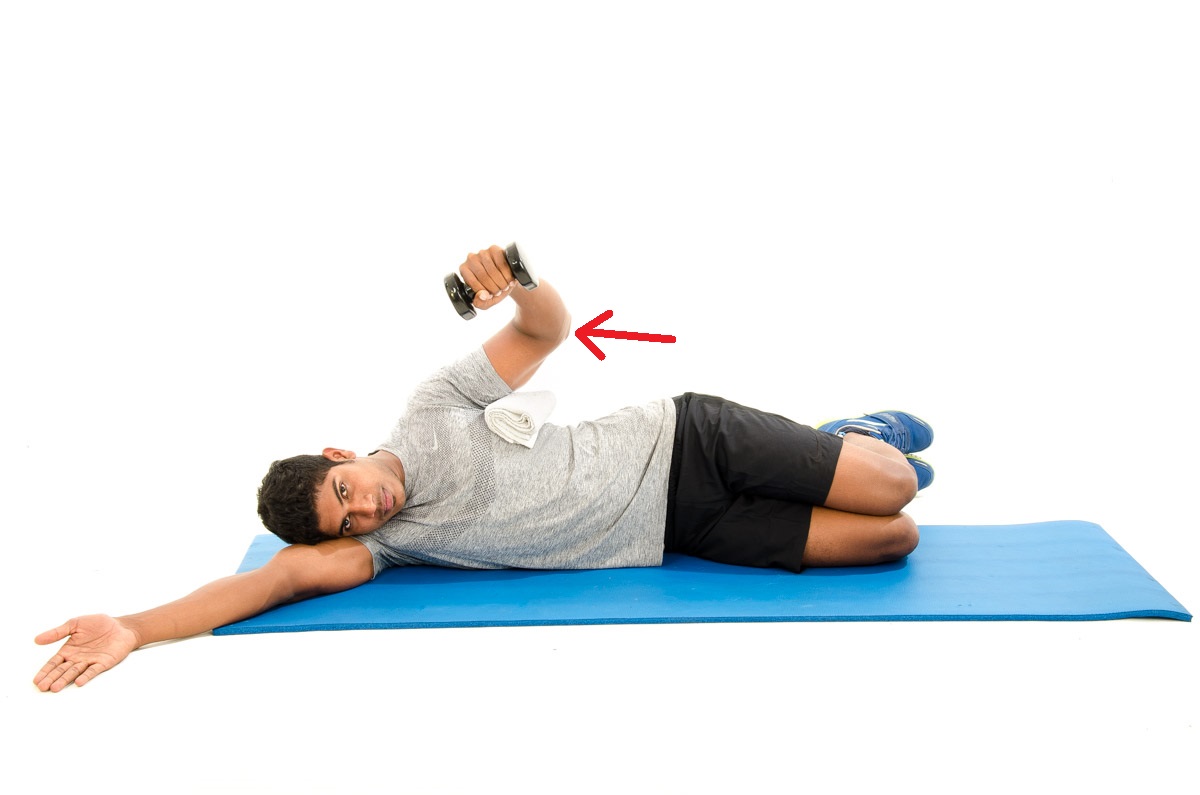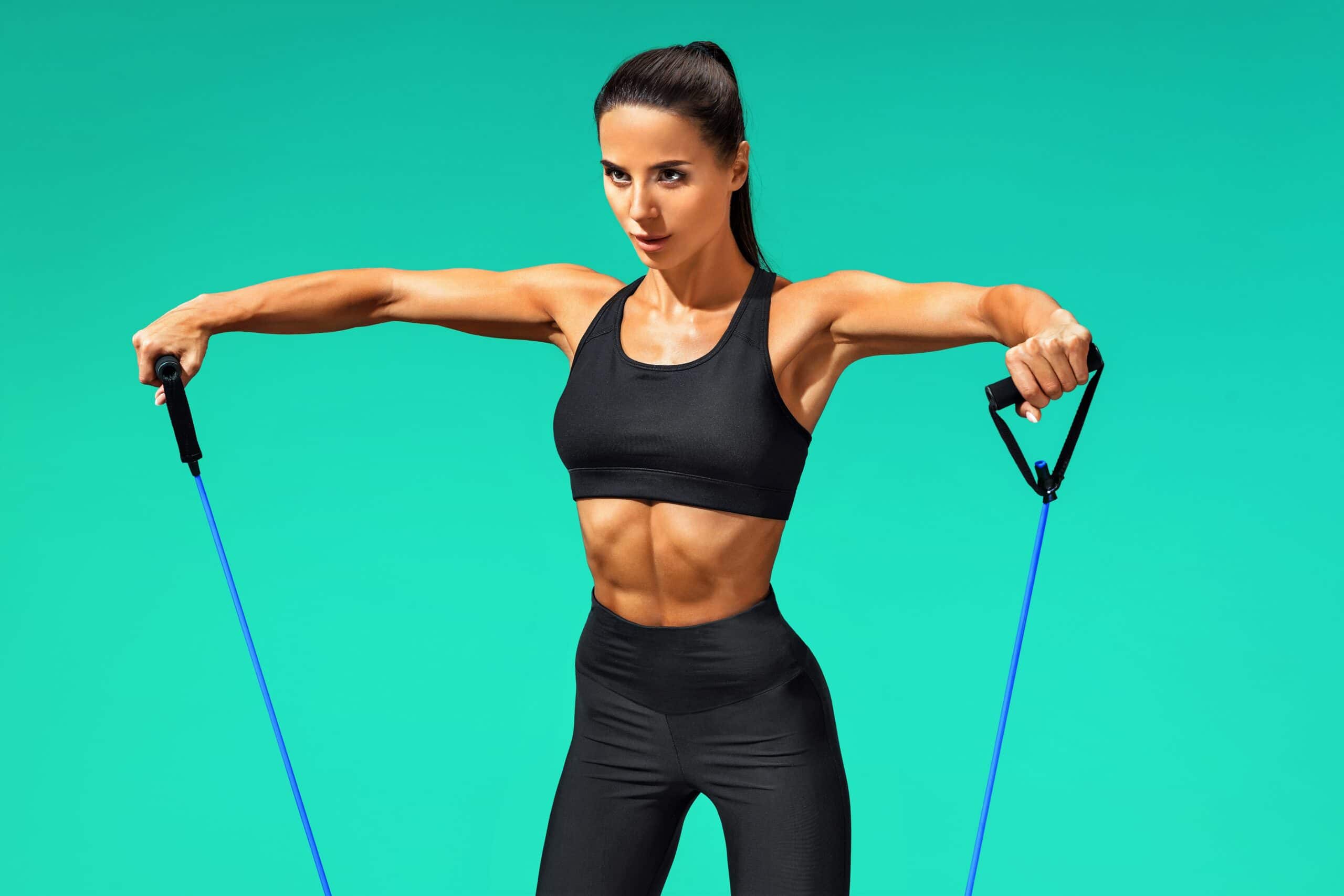Healthbeauty123.com – Shoulder exercises should focus on strengthening the muscles around the shoulder blades and developing shoulder stability. One exercise that helps strengthen shoulder muscles is the modified push-up. You can add difficulty by orienting yourself horizontally, or by standing closer to a wall. Experiment with the positions to make sure you reach the correct range of motion and maintain a tight connection with your shoulder blade muscles.
Shoulder Rotation Exercises with a Light Resistance Band
The next exercise is the shoulder rotation exercise. Start by laying on your side with your injured shoulder on top. Grab a hand weight and then slowly rotate your shoulder until you are 90 degrees. As you rotate the arm, keep your elbow bent. Hold for ten seconds and repeat. This exercise can also be performed with a light to a medium resistance band. Then, slowly return to the starting position.
You can also stretch the top of the shoulder by using a rolled-up towel. While you are doing this, use your other hand to pull the elbow inward. This movement is beneficial for improving shoulder extension and superior capsule mobility. This exercise also promotes scapular stabilization, which is necessary for normal shoulder movement patterns. But always consult with a doctor before starting any exercise routine. It is important to choose a program that has a wide variety of exercises.

The Supraspinatus muscle is one of the four rotator cuff muscles that stabilize the shoulder joint when lifting an arm over your head. This muscle fires before the Upper Traps, and helps prevent compression at the top of the joint. A weak Supraspinatus can lead to painful shoulder impingement.
Relieves Shoulder Pain and Improves Mobility
These exercises can help you overcome shoulder pain and improve mobility. It is important to use the right exercise routine to get the most out of your workout. But don’t try this workout without consulting with your doctor or an injury recovery therapist first. By following a proper workout routine, you will be able to reduce pain and improve your strength and flexibility.
The most important thing to remember while doing these exercises is that they should be gradual. If you’re doing too much exercise too quickly, your shoulder may become stiff and painful. You should start with mild exercises and build up to higher levels in the end. Otherwise, you’ll end up making the pain worse.

For best results, warm up and stretch your shoulder muscles before and after exercises. Avoid pushing the shoulder during the exercises; try to push your shoulder just enough to feel a stretch without pushing too hard. If you have shoulder pain, start with lower weight and fewer reps. After a few days, you can increase the weight and reps as your shoulder muscles become stronger. You can even use ice packs or hot compresses to ease any pain you may experience.
The Eagle Pose Great Exercise Stretches the Shoulders
The Eagle Pose, also known as Garudasana, is another great exercise that stretches shoulder muscles. To do this, you should sit in an upright position. Raise your right arm to one side, then slide your left arm underneath your right arm. Lift your right arm off the ground and hold the position for 30 seconds. Once you are comfortable with this position, extend your arms to the sides. This exercise is good for stretching the shoulder muscles and improving back mobility.
The next exercise to improve shoulder strength is arm rotation. Start with your elbow at shoulder height and extend your arm to 90 degrees. Then, retract your shoulder blades to keep the elbow in line with the shoulder and front of the shoulder. Next, turn your elbow internally while avoiding low back arch. Repeat this exercise 10 to 15 times. Once you are comfortable with these exercises, you can gradually increase the difficulty. They’ll help you achieve a lean, firm, and strong shoulder.

Using a resistance cable is another good exercise for strengthening shoulder muscles. This exercise recruits several different muscles in the spinal region, including the Transverse Abdominus, the deepest abdominal muscle. This muscle is important for lumbar and thoracic stability. This exercise also recruits the middle and lower traps, as well as the posterior deltoi.
Reference:






